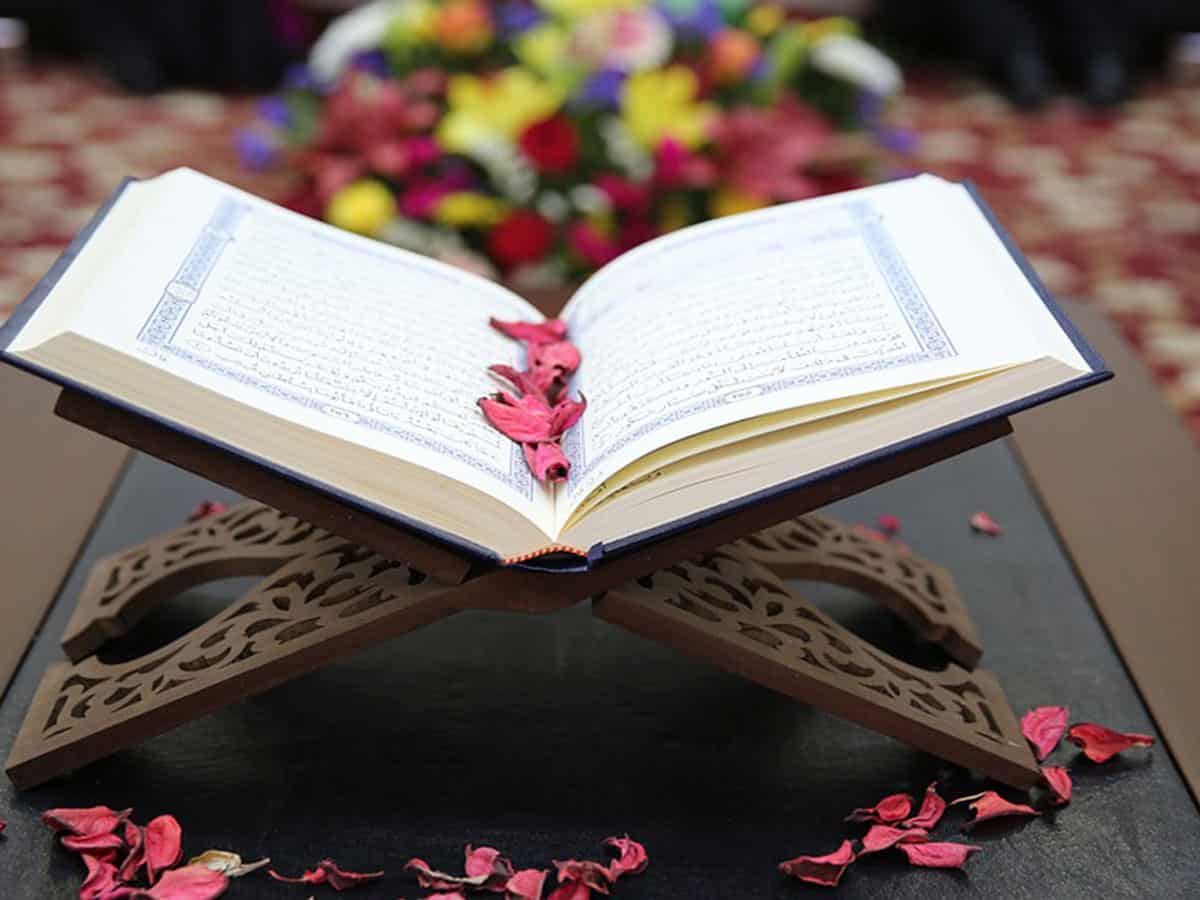
Nagpur: A rare 16th Century copy of the Holy Quran written in gold ink preserved by a Rashtriya Swayamsevak Sangh-inspired organisation is kept on display at the 108th Indian Science Congress which was inaugurated here in Maharashtra on Tuesday.
An official of the organisation that has displayed the gold ink Quran said there are only four copies of this holy book in the world.
The copy of the Quran and some ancient manuscripts, a few of them believed to be centuries old, are displayed at a stall put up by the Nagpur-based Research For Resurgence Foundation (RFRF) at the ISC exhibition.
RFRF is the research wing of Bhartiya Shikshan Mandal (BSM). The Mandal was formed to accomplish a national resurgence in the field of education, according to its website.
“This gold ink Quran was written in the 16th Century. There are only four copies of this Quran in the world,” the Director of RFRF Knowledge Resource Centre, Bhujang Bobade, told PTI.
Bobade, who is also the principal investigator at the National Manuscript Authority in New Delhi, said the footnotes in this Quran are written in the Nastaliq script.
He said Nastaliq and Kufi are the two scripts used in Persian. Nastaliq is considered the world’s best script.
Another speciality of the rare gold ink Quran manuscript is it contains 385 pages without a single mistake.
“There are 385 pages with miniature writings in gold ink. But despite the small size, there is not a single mistake on any of these pages. This is the uniqueness of this book,” said Bobade.
He said the copy of the Quaran was given to them by the family of Diwan of the Nizam of Hyderabad.
Bobade said the advisor to Iran’s President had specially visited to see the RFRF collection.
He said RFRF has 15,000 manuscripts of the Indian history, religions and sciences of ancient India.
“The world knows about ‘Akbarnama’ written by Abu Fazal in 1577. RFRF has that book but we also have ‘Tibb-e-Akbar’ written in Persian which the world doesn’t know about. ‘Tibb-e-Akbar’ was written in the 17th century,” Bobade said.
He said RFRF’s collection also includes ‘Taarikh-e-Taj’ which explains the history of the Taj Mahal.
“The world knows about the Taj Mahal but they do not know its actual history like the exact date when Mumtaz Mahal died. ‘Taarikh-e-Taj’ states Mumtaz Mahal died on June 17, 1631 on Wednesday at 9.30 pm. Similarly, it also mentions who all worked there and the locations from where stones and marbles were brought,” Bobade said.
The RFRF collection also includes the first manuscript on Chhatrapati Shivaji Maharaj written by Ramchandra Dixit in Manjrath village in Beed district of Maharashtra. “We also have the last letter written by the 17th century Maratha king in his original writing,” Bobade added.
He said the Garud Puran and the Vishnu Puran written on palm leaves, which are thousands of years old, are also in the RFRF’s collection.
The RFRF has till now digitized 1.5 lakh ancient manuscripts running into five crore pages, and made them available for researchers.
“We have collected a database of more than 25 lakh manuscripts from 3,441 archives and museums. All these manuscripts are digitised for people who want to do research. We have been working for the last 16 years to collect these ancient manuscripts and preserve them,” he said.
